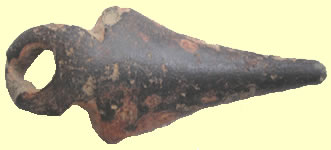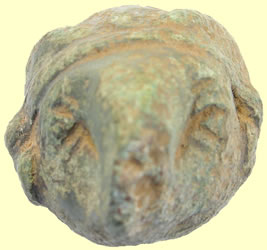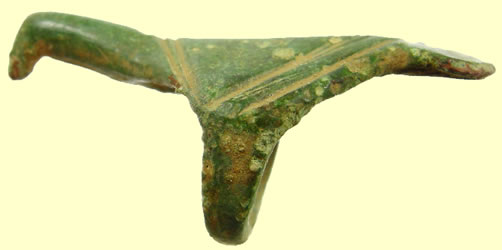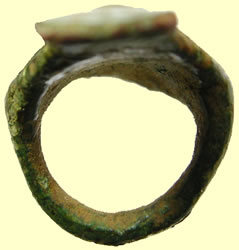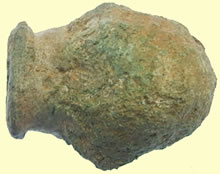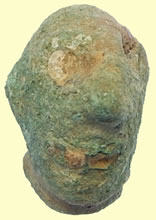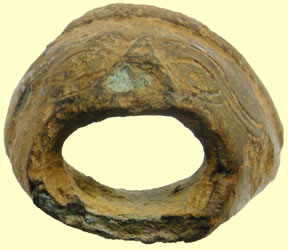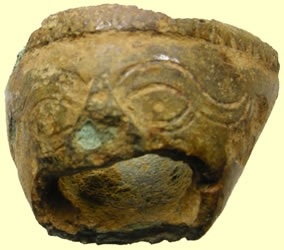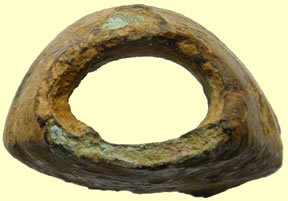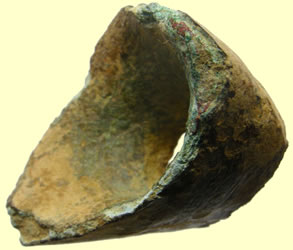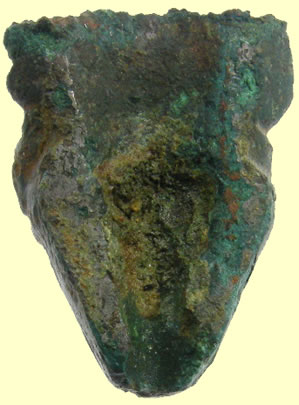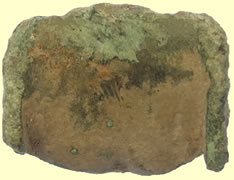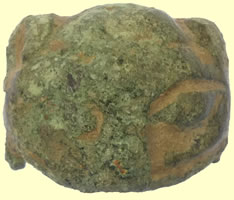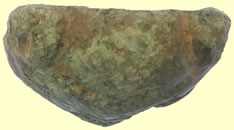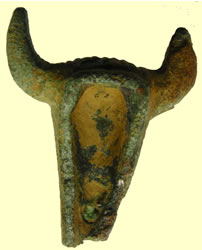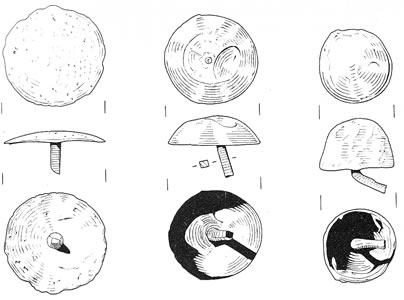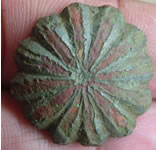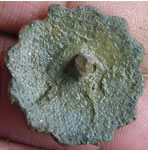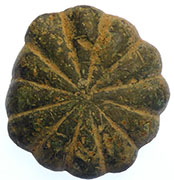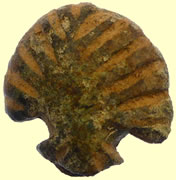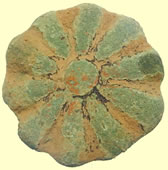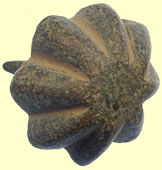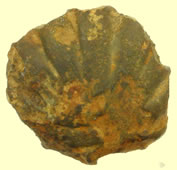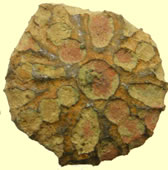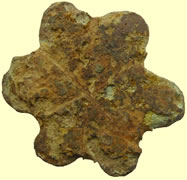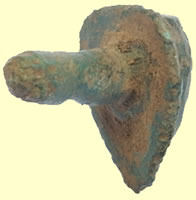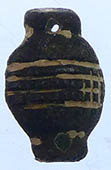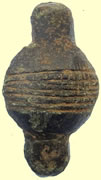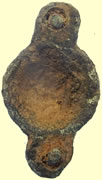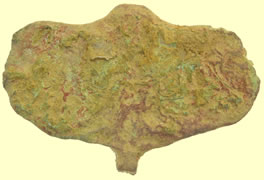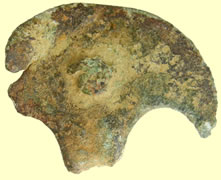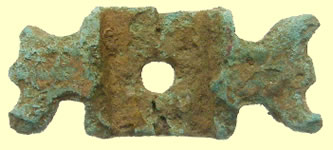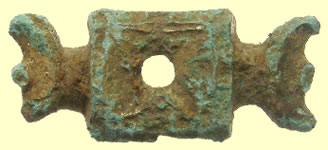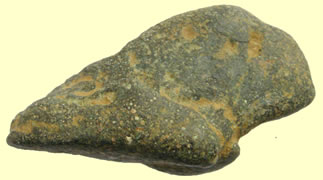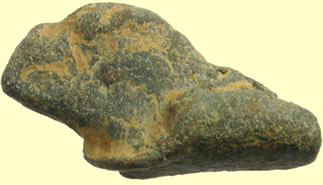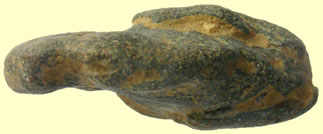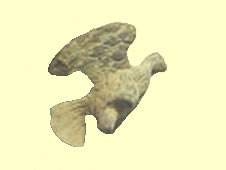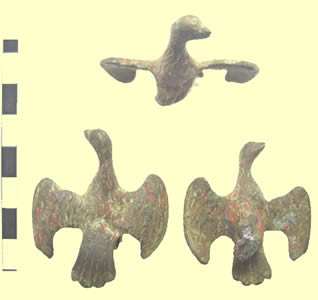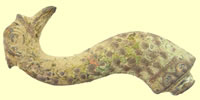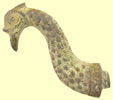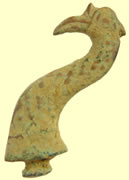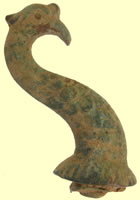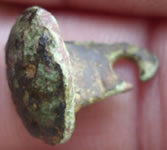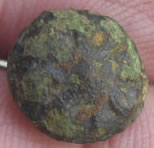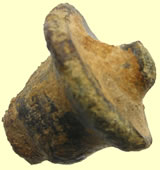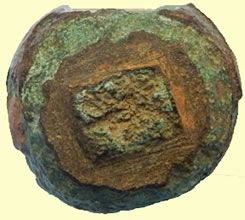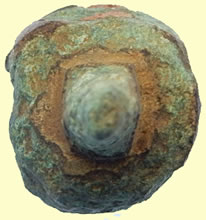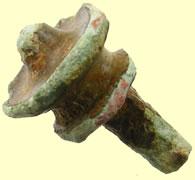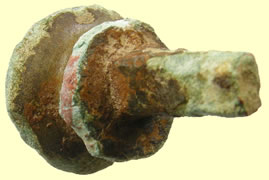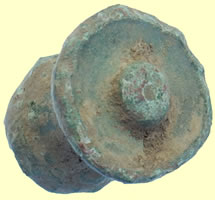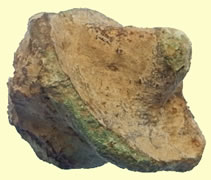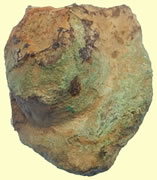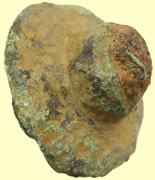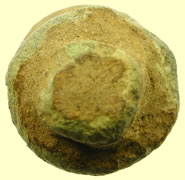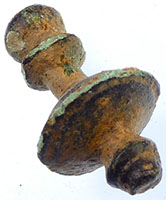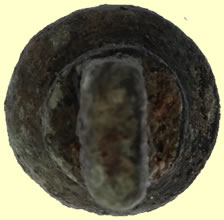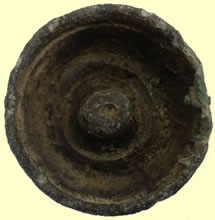

Metal detecting holidays in England with the World's most successful metal detecting club.20 years plus.
Twinned with Midwest Historical Research Society USA.
Roman mounts - all types |
|
Roman bronze vessel handle mounts 24.8g, 56.63mm L x 26.25mm w |
|
Huge Roman bronze animal head mount - possible bucket or pot mount - looks like it is a bird with a hooked beak but it could also be an elephant 80.24g, 29.32mm L x 28.5mm dia
|
|
Fantastic find 1stC BC Celtic bucket mount - The bird probably a raven would be one of a series used as decoration around the top of the bucket. The bucket was used in sacrifial or religious ceremonies In Celtic mythology birds were represented as the messengers of the gods
34.02mm L, 5.28g
|
|
Roman bronze vessel mount |
|
Roman bronze bust mount |
|
C 1stC AD Celtic drinking vessel spout - face decoration 34.94mm W x 20.63mm L - 27.20g |
|
Roman animal headed bucket mount |
|
Stunning Roman mount with face decoration
Celtic mount
Celtic mount
Romano British riveted bronze head mount 36mm L x 24.9mm W x 3.83mm T
|
|
 |
  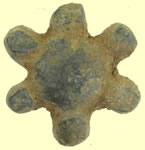 |
| Roman bucket handle mount | Roman Military piece - Lugged baldric mount |
Roman miiltary mount with single integral fixing Roman military 'universal' decorative washers - used on helmets. Ref Appels & Laycock |
|
 |
 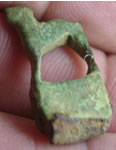 |
| Celtic animal mount | Romano/British bronze dog mount - 2.87g, 22.91mm H x 11.48mm W |
Very interesting Roman bronze mount - could be a face |
|
|
|
| Roman mounts | |
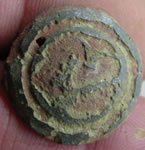 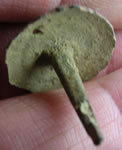 |
 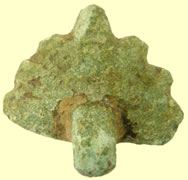 |
| Roman Baldric phalerae | Roman handle mount |
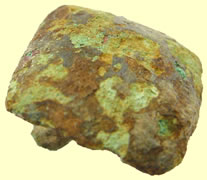  |
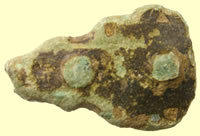 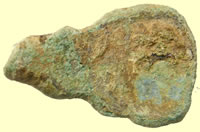 |
| Roman bronze armour mount | Roman bronze handle mount - 2 rivet fixings |
Roman tendril pendant |
|
Roman decorated copper alloy pelta-shaped mount. It is semi-circular, with the upper surface having a incised decoration Broad period: ROMAN Date from: AD 40 |
|
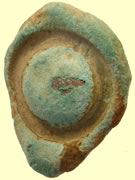 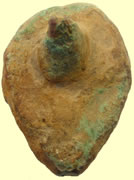 |
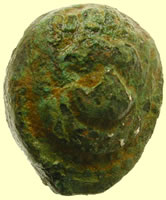 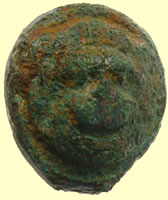 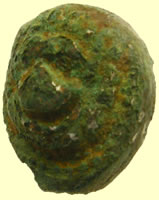 |
| Roman mount | Roman animal headed mount - gilding remains |
Roman gilded mount |
|
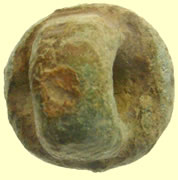  |
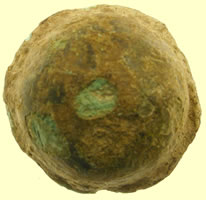 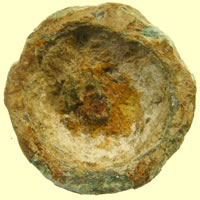 |
| Roman handle mount | Roman bronze mount |
Roman Eagles head bronze votive offering/mount |
|
A near identical mount is in Benet’s Artefacts second volume, page171 number R09-0403. Described as Mount (Eagle) 50mm. Spread wings with feathers detailed. Mounted on a stem. Perhaps from a military standard.
A copper alloy Roman votive bird figurine (1st-2nd century AD). The figurine depicts a bird with outstretched winds and neck curved so the head faces one side. The tail is fan-shaped with a scalloped edge representing the ends of feathers. The neck and body are decorated with s-shaped incised lines; the wings and tail are decorated with thicker and more irregular lines all representing the feathers. This decoration is on both the upper and lower surfaces. There is a broken stump where the feet would have been, this is probably where the figurine was attached to another object. The figurine is probably representing a phoenix or an eagle. It is more likely a phoenix due to the long slender neck and short pointed beak (an eagle's beak would be more curved). Notes: Figurines of birds are often found on religious sites in southern England. The use of birds alluded to the practice of augury where priests were able to divine the will of the gods from studying bird flight (Booth & Henig 2000:125). Booth, P. and Henig, M. 2000. Roman Oxfordshire. Sutton Publishing Limited, Gloucestershire.ChronologyBroad period: ROMAN Period to: ROMAN Date from: AD 43 Roman military mount
In reference books these are identified as Roman but I am not so sure
|
|
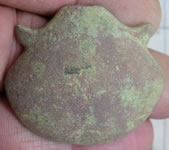 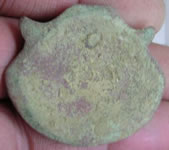 |
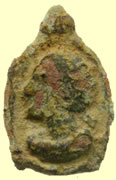 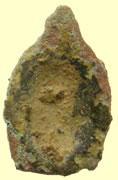 |
| Roman military Pelta mount | Roman mount |
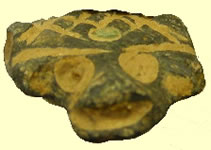 |
 |
| Roman mount | Roman mount |
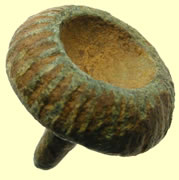 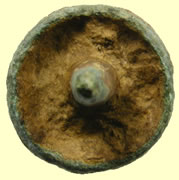 |
|
| Roman baldric mount | Roman oval mount with suspension loop |
  |
|
| Roman pendant hanger mount | Roman mount |
Mounts and finials (possible latch keys) |
|
Incomplete Roman cast copper alloy mount. It is circular in plan, with a domed head (diameter 20.31mm). There is a stepped in cylindrical projection on the reverse (diameter 12.54mm), with an incomplete iron shank projecting from the centre. The shank has a square cross section (3.54mm thick). It is 17.87mm long and weighs 13.18 grams. It has a dark brown patina and the surface is pitted. ChronologyBroad period: ROMAN Date from: AD 40 Dimensions and weightWeight: 13.18 g Materials and constructionPrimary material: Copper alloy Manufacture method: Cast Completeness: Incomplete
Classic Roman mounts
|
|
 |
|
